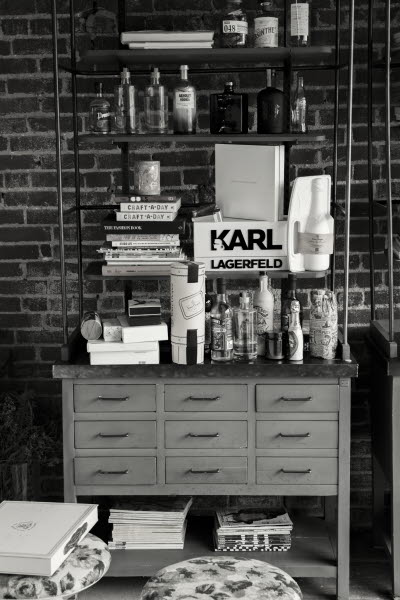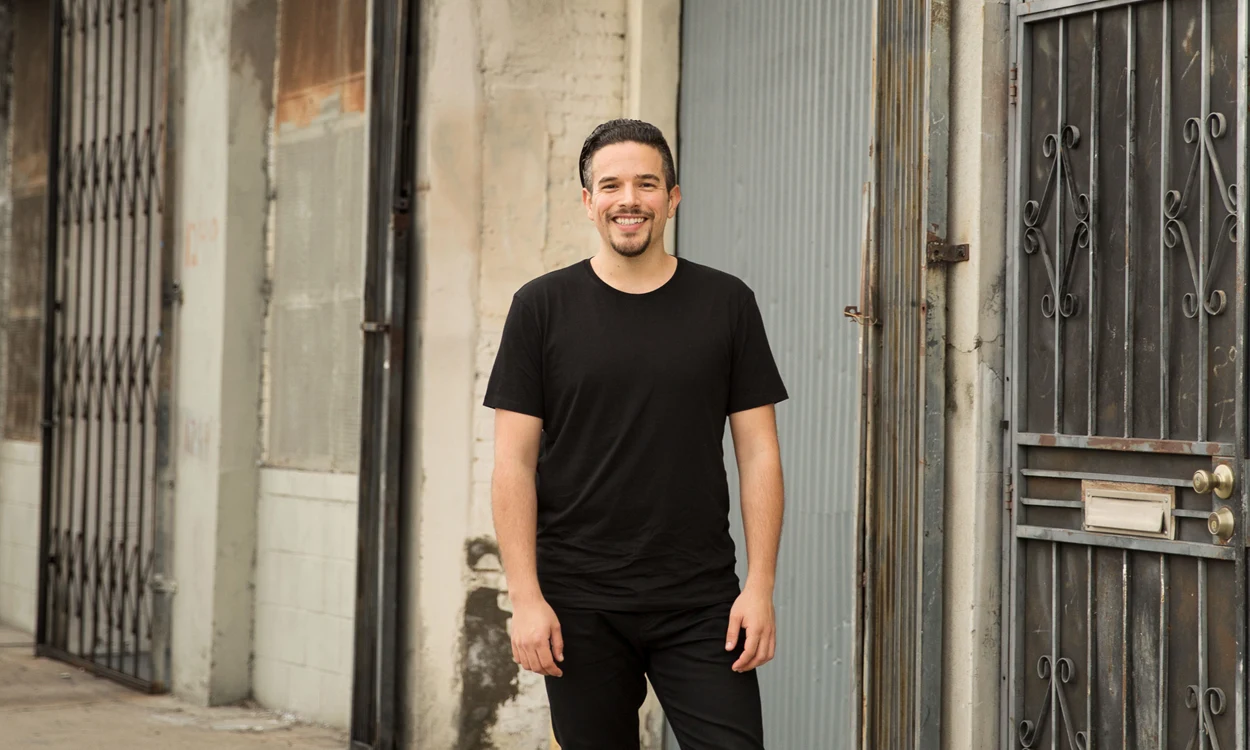In spring 2007, Andrew Gibbs was wandering through LA department stores, scanning the shelves and secretly taking photos of packages while avoiding the security guards. He had been given his first job as a packaging designer and was thirsty for inspiration. The internet offered slim pickings, so Andrew posted his photos on a Typepad blog that he named The Dieline. Today, ten years later, the website has grown into a platform frequented by half a million unique visitors every month looking for news and inspiration about everything to do with packaging design. The Dieline has also spun off several other projects: an annual conference, an international design award, a jobs page and, not least, the blog’s physical manifestation, the book Box Bottle Bag.
When Inspire meets Andrew Gibbs at The Dieline’s office in the Los Angeles Arts District it is a public holiday, the employees are absent and the premises are empty. In one corner various types of packaging are lined up, mostly wine and spirits bottles. “They’re the ones we tend to save,” Gibbs explains as he shows us around. From the roof terrace, he points to one of the skyscrapers in the heart of downtown a couple of kilometres away. In a few weeks’ time, they will move there – to new, bright rooms on the 36th floor. The conclusion? Things are going well for The Dieline.
“Every day, Monday to Friday, we post five new projects.”
— Andrew Gibbs
What do you think made The Dieline such a success?
“I believe it has to do with need and timing. I had the right idea at the right time – when I started there was nothing similar. As a packaging designer, I felt isolated. In order to design cool packaging, I had to know what was out there. But I could never have imagined the blog would become this successful.”
But do you need more than good timing to survive for ten years?
“Much of the success is due to how consistent we were. Every day, Monday to Friday, we posted five new projects – that was my goal from the beginning and we’re still doing it. We just posted our ten-thousandth project.”
What changes in packaging design have you seen since you started The Dieline?
“I’ve clearly noticed that packaging trends follow the economic situation. Before the financial crisis, we saw packaging that was luxurious and glamorous whereas in recent years we’ve seen a return to the minimalistic and simple. Consumers have become jaded – they want things that are simple and that they can relate to.”
Which have been the most obvious trends?
“One huge trend has been what we call neo-retro. It looks old and handmade but also feels fresh and new. Nature is another trend. Pantone hit the bullseye by choosing green this year. We’re seeing a lot more green packaging – and by that, I don’t just mean the colour – sustainability has become a very important factor. It’s not just an extra bonus any more but something consumers want and demand.”
Where are you seeing the most interesting packaging right now?
“Food. Food has always led the way in terms of interesting packaging. There is a best-by date and so many other limitations you have to think about. For example, food waste is a big problem and is something that’s starting to be integrated with the packaging. The packaging designer can play a role in solving the problem.”
How might that work?
“There’s a Swedish agency called Tomorrow Machine (featured in Inspire #47), which makes olive oil in a bottle made of crystallised sugar. The bottle is totally edible and to open it you have to break it apart. The agency also makes a juice packet of gelatin that shrinks as the contents expire – it’s also totally edible and biodegradable. The products are not on the market yet but I believe this is the future of food packaging.”
So, is the packaging designer becoming a scientist?
“That’s basically what’s happening! Science and packaging have to merge, especially when it comes to food. People’s purchasing behaviour is totally different and food packaging has to develop.”

It feels like aware consumers prefer to avoid packaging when it comes to food.
“People don’t want food packets that feel mass produced. That’s why designers are creating packaging that appears very exclusive like it is handcrafted, or they draw on the retro trend by using an old-fashioned typeface. It gives the illusion that the food is homemade – that human hands have been involved in making it.”
What packaging trend have you had enough of?
“There’s a trend that we call extreme brand extension. For example, KFC launched a chicken-flavoured nail polish that they called Finger Licking Good. In one way it’s fascinating but I don’t know how long-lasting it is.”
It doesn’t sound very appealing – how did it sell?
“It sold out! They continued with the same theme and produced a sunscreen lotion called Extra Crispy. Then there are less extreme cases, like Crayola’s lipstick collection for Clinique, a terrific collaboration where they packaged the lipsticks in a box just like Crayola crayons.”
What has online shopping meant for packaging design?
“Partly that we have packaging as an experience – that’s what unboxing is about. In these cases, the design is more detailed and is worked out with social media in mind. Then we’re seeing a bit of the opposite in everyday consumables, where the packaging is being simplified because you are not buying the product in a physical store but seeing it as a small image on the screen. A number of brands have begun designing two different forms of packaging for the same product – one for traditional retail outlets and one for e-commerce.”
You’ve been blogging about packaging design for ten years now – what do you see if you look ahead ten years?
“I believe people will spend a lot less time in bricks and mortar stores – they really have to be totally developed in order to remain relevant. We’re already seeing how people are doing VR shopping at department stores from home and then going there to pick up the packages. Packaging must also be developed based on how people buy the products. If Amazon is delivering everything by drone in ten years’ time then the glass bottle is going to become extinct.”
What are you most proud of in your work with The Dieline?
“That it becomes a platform for designers around the world because I’ve always wanted to be a part of the packaging design industry so it’s really an honour. I feel it’s my duty to represent the industry as best I can.”
How do you consume packaging yourself?
“I used to be a big consumer – that’s where it all started. Now I consume less than ever and I’m trying to use fewer products. I don’t buy a mass of stuff I don’t need – instead, I find something that works well and I’m satisfied with that.”
You really don’t seem to be the only person thinking this way.
“It’s totally a trend that we’re seeing. Especially among makeup and skincare brands, where they’re developing products to do everything. One product is replacing three. I think it’s great!”
Though we still have to buy something…
“We still have to buy something.”
Created 7 July, 2017.


